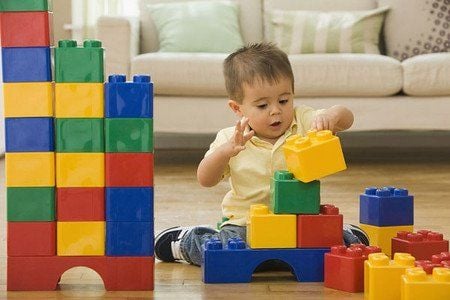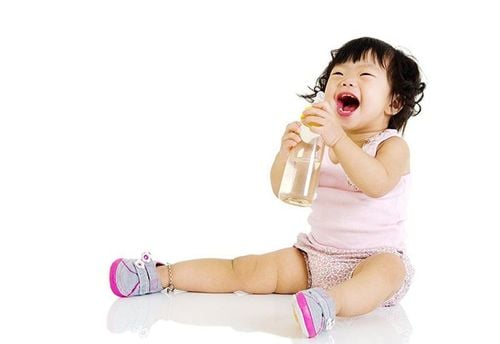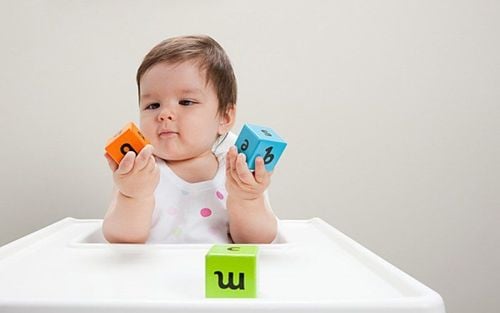This is an automatically translated article.
When seeing their children know how to do something from a very young age, parents often love their children and are proud of this. Teaching your baby to walk or just talk is your way of showing everyone how your baby is growing every day. However, it is difficult to determine the right time to teach children to use the toilet on their own. Many parents wonder: is an 18-month-old baby ready for toilet training? The following article will help us understand this issue.
1. Is your 18-month-old ready for toilet training?
Many experts believe that 18 months is too young to start toilet training; while many grandparents believe that they have trained their children to go to the toilet on their own from the age of 1. Who is right in this case? Of course, the answer depends on the child himself and in fact, some babies are ready to start toilet training as early as 18 months old.
Before you start trying to do this, however, you need to learn some of the signs of readiness in your child. Sensory awareness allows a toddler to recognize the need and then “hold on” until he or she goes to the bathroom. Usually by the age of 2, children will understand the concept that everything has its place including peeing and pooping.
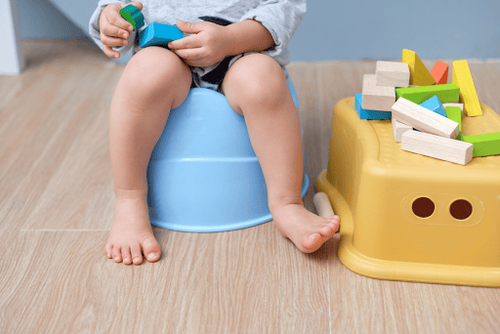
Một số trẻ 18 tháng tuổi đã sẵn sàng để bắt đầu quá trình tập đi vệ sinh
2. Encourage your 18-month-old to use the toilet
With children this age, a gentle and calm approach is best. Toddlers learn by imitation, so start by letting them observe what you do in the bathroom. Let your child be fully clothed when using the toilet in the same way that adults do to get them used to the potty. If your child has a favorite doll or stuffed animal, you can pretend he's going to the bathroom too, a tactic that might get him to try it on his own. However, do not set too many expectations to avoid putting too much pressure on the child because this may not be the time when the child is ready to use the toilet.
You need to train your child in other skills required when going to the toilet such as the ability to recognize the need to go to the toilet, “hold on” until it is time to go to the toilet, take off his pants and sit long enough to complete the need to go to the bathroom. own demand. This depends on the child's normal cognitive, emotional, and physiological development, which usually occurs between 18 and 24 months of age.
The truth is that most common assumptions about the best age for toilet training depend more on the needs, wants and cultural attitudes of adults than the willingness to control functions. physical abilities of a child. In many African and South American cultures, where mothers and infants are in near-constant contact and infants do not wear diapers, mothers "train" their infants to defecate at any time. anywhere. In Finland and other Nordic countries, traditionally, children are placed on the potty after feeding from an early age – and if they urinate or defecate while being held there, they are praised.
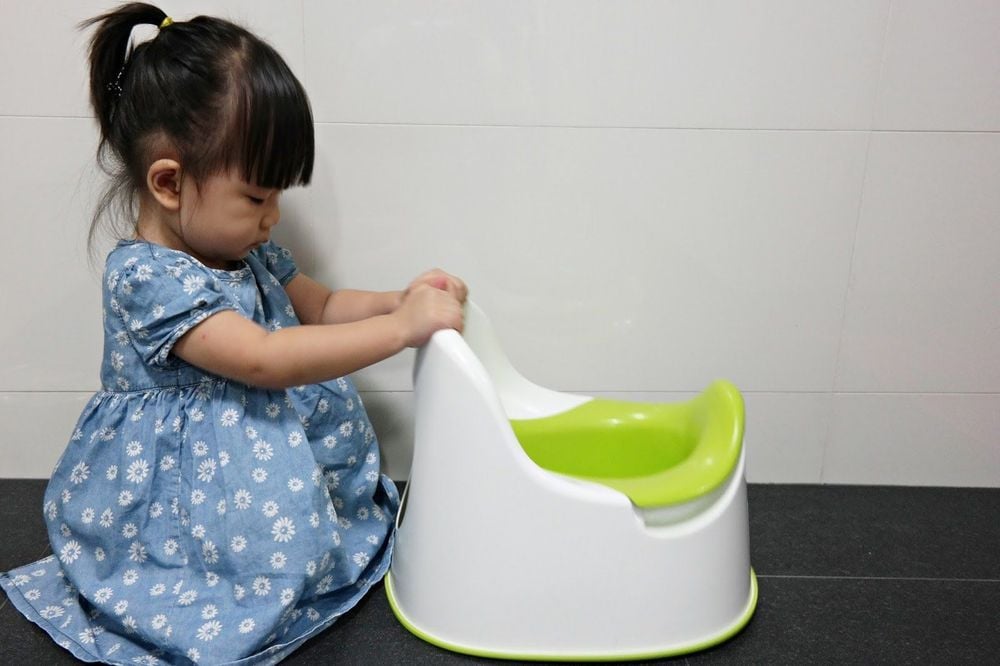
Việc cho trẻ tập đi vệ sinh phụ thuộc nhiều vào mong muốn và thái độ văn hóa của người lớn
One reason why in the US, toilet training is usually started at 1 year old is to reduce the workload of caregivers who have to clean and change a lot of cloth diapers. daily. This early toilet training is still common in families that use disposable diapers or have a large diaper purchase or send their child to a daycare or preschool. no diaper rule.
In general, toilet training an 18-month-old baby on their own won't do any harm as long as your expectations for your baby are realistic and don't put pressure on them. But child development experts now believe that the most effective toilet training is to wait until the child is ready to take control of much of the process on his own. Children under twelve months of age are not only not ready for bladder and bowel control, but may not have the physical skills needed to go to the bathroom and undress in time.
In addition, children also need emotional readiness: The desire to use the potty, a positive attitude during practice, and the ability to manage any fears related to the process of going to the toilet are all one. part of a child's emotional readiness and this may not happen until the child is two, three, or four years old, or even until the child is older. A child's ability to speak, which allows a child to learn through conversation and guidance and to express any fears or anxieties that arise, these skills can begin to develop rapidly by the time a child is 2 years old. year old. Even social awareness motivates some children to imitate the use of the bathroom by a sibling or playmate in the early toddler years.
Every child develops skills at a different time and you are the best judge of when your child has acquired the necessary physical, social, emotional and cognitive skills to start. early training for children. Because fluctuations in a child's development and family circumstances are unpredictable, it's best to avoid assuming that your child will start exercising at a certain age. Instead, consider adopting the ready approach and then start coaching your child, regardless of his or her age.
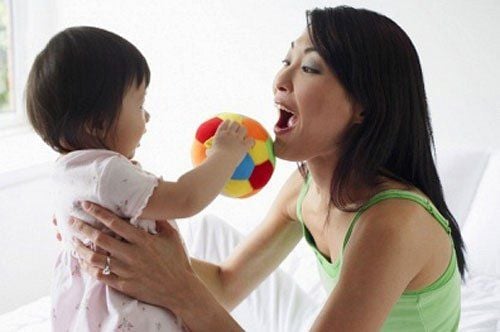
Cha mẹ là người đánh giá tốt nhất khi nào trẻ sẵn sàng để bắt đầu luyện tập
3. Other development of 18-month-old children
Now, the baby's motor development has advanced greatly, a typical 18-month-old child does not want to sit still for long enough to perform tasks that require perseverance. However, there are a few activities that will keep him entertained: scribbling with crayons or drawing with his fingers, stacking blocks, twisting buttons on doors and cabinets, and pressing buttons on phones, TVs, and appliances stereo sound.
A toy phone or a real phone that has been unplugged will attract children. Your baby may also enjoy trying to slide large pieces of wood onto a piece of string. 18-month-old babies love to fit small objects inside of other objects. One sign of a child's growing dexterity is the ability to hold a cup and drink water from it without spilling.
Keep a few toys in the back of the car to make the children's trips more interesting. Children may also be skilled at pushing or pulling a ball, wagon, or similar toy. In winter, children can play by stomping in puddles or fighting with snowballs, throwing snowballs at trees or telephone poles instead of at other children.
For children to be healthy and develop well, it is necessary to have a nutritious diet in terms of quantity and quality balance. If children are not provided with adequate and balanced nutrients, it will lead to diseases of excess or lack of nutrients, which adversely affect the comprehensive development of children in terms of physical, mental and motor skills.
Parents should supplement their children with supportive products containing lysine, essential micro-minerals and vitamins such as zinc, chromium, selenium, and B vitamins to help fully meet their child's nutritional needs. At the same time, these essential vitamins also support digestion, enhance nutrient absorption, help improve anorexia, and help children eat well.
Parents can learn more:
Signs of zinc deficiency in children
Micronutrient deficiency and failure to gain weight in children
Please regularly visit Vinmec.com website and update useful information to take care of your child. Take care of the baby and the whole family.
Reference source: babycenter.com






